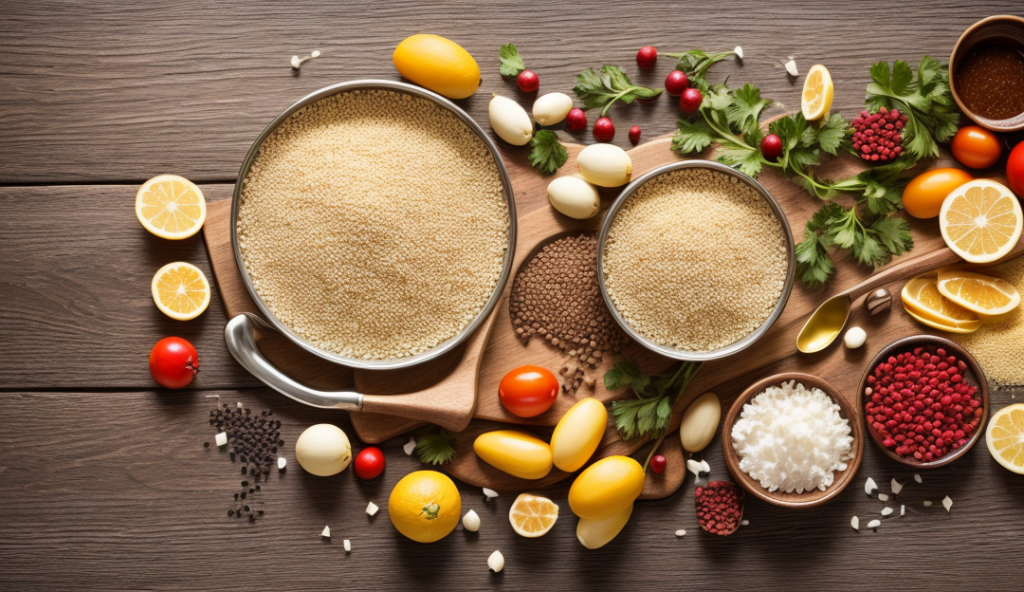
In today’s fast-paced world, where boundaries seem to fade away, one exciting trend has taken kitchens by storm – Culinary Adventures. More than just cooking, it’s an exploration of global flavors right in the comfort of your own kitchen. Let’s dive into the world of spices, aromas, and mouthwatering dishes from different corners of the globe.
I. Introduction
A. Definition of Culinary Adventures
Embarking on a culinary adventure means transcending the boundaries of your kitchen and embracing diverse flavors from around the world. It’s a journey that goes beyond the ordinary, making cooking an exciting exploration.
B. Growing Trend of Exploring Global Flavors at Home
With the rise of food enthusiasts and home cooks, there’s a growing trend of people seeking to recreate the magic of global cuisines in their own kitchens. This not only adds variety to daily meals but also opens doors to cultural experiences.
II. Benefits of Culinary Adventures
A. Broadening Palate
One of the primary benefits of global culinary exploration is the expansion of your palate. Trying new and exotic flavors introduces your taste buds to a world of possibilities, making every meal an adventure.
B. Cultural Awareness
Culinary adventures are a window to different cultures. Understanding the ingredients, cooking techniques, and the significance of certain dishes broadens your cultural awareness, fostering a deeper connection with the world.
C. Health Benefits
Many global cuisines emphasize fresh and wholesome ingredients, contributing to a healthier lifestyle. Exploring diverse culinary traditions can lead to the discovery of nutritious and delicious recipes.
III. Getting Started
A. Researching Global Cuisines
Begin your culinary journey by researching different global cuisines. Understand the staple ingredients, cooking methods, and the cultural significance of various dishes.
B. Gathering Ingredients
Once you’ve chosen a cuisine, gather authentic ingredients. Visit local international markets or specialty stores to find the essential elements that make each dish unique.
C. Essential Cooking Tools
Investing in some key cooking tools, such as a mortar and pestle or a wok, can enhance your culinary experience. Having the right equipment makes it easier to replicate authentic flavors.
IV. Asian Flavors
A. Introduction to Asian Cuisine
Asian cuisine is known for its bold flavors and diverse dishes. Explore the culinary traditions of countries like China, Japan, and Thailand, starting with their most iconic recipes.
B. Popular Ingredients and Dishes
Discover essential Asian ingredients like soy sauce, ginger, and rice vinegar. Try your hand at classic dishes such as sushi, stir-fries, and noodle soups.
C. Easy Asian Recipes for Beginners
For those new to Asian cooking, start with simpler recipes like fried rice or teriyaki chicken. As you gain confidence, you can progress to more complex dishes.
V. Mediterranean Delights
A. Overview of Mediterranean Cuisine
Mediterranean cuisine is a celebration of fresh, locally sourced ingredients. Explore the flavors of Greece, Italy, and Spain, focusing on olive oil, herbs, and seafood.
B. Key Ingredients and Dishes
Stock up on olive oil, olives, feta cheese, and fresh herbs. Experiment with Mediterranean classics such as Greek salad, paella, and pasta with homemade pesto.
C. Simple Mediterranean Recipes to Try
Start with easy recipes like bruschetta or tzatziki. These dishes showcase the simplicity and richness of Mediterranean flavors.
VI. Latin American Feast
A. Exploring Latin American Culinary Traditions
Latin American cuisine is a vibrant fusion of indigenous and colonial influences. Dive into the flavors of Mexico, Brazil, and Peru, exploring their unique culinary traditions.
B. Must-Have Ingredients and Iconic Dishes
Discover the magic of ingredients like avocados, plantains, and achiote. Try iconic Latin American dishes like ceviche, empanadas, and mole.
C. Beginner-Friendly Latin American Recipes
Start with approachable recipes like guacamole or black bean soup. These recipes provide a taste of Latin American cuisine without overwhelming complexity.
VII. Fusion Cooking
A. Mixing and Matching Flavors
Fusion cooking is a creative approach to combining elements from different cuisines. Experiment with flavors, textures, and cooking techniques to create unique and exciting dishes.
B. Creative Culinary Combinations
Blend the best of two worlds, like combining Mexican spices with Asian noodles or infusing Italian herbs into Middle Eastern dishes. The possibilities are endless.
C. Tips for Successful Fusion Cooking
Balance is key in fusion cooking. Ensure that the flavors complement each other, creating a harmonious and delightful culinary experience.



